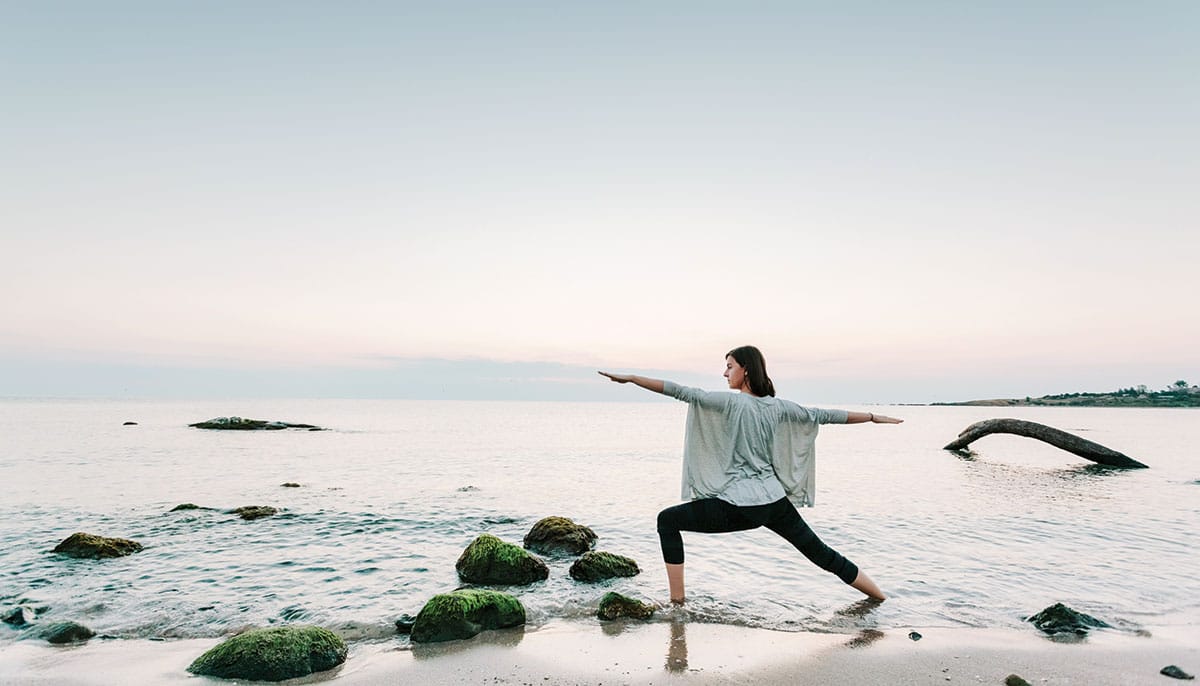My beagle, Little Bit, can sense a storm gathering. The reason I know this is because Little Bit uses the language of her body to communicate her fear. From just the slightest shift in air pressure, her chunky little body starts quivering. Then, at the first clap of thunder, she springs off her stubby legs and torpedoes herself through the air, taking aim for the familiar protection of my arms. I am her port in a storm.
All beings feel a need for refuge or sanctuary at various moments in our life. Some of us look for protection in material belongings, career prestige, or financial investments, or we might look for escape in alcohol, food, or even over-exercising. An authentic spiritual path offers a different kind of safe haven. Instead of the temporary relief of an aspirin or a place to hide from yourself, spiritual refuge offers a path toward feeling one’s own basic goodness.
Instead of unrealistic goals that almost make failure a given, this is just about feeling good more often.
But first, like Little Bit, we have to start by feeling our mental and emotional discomfort: fear, frustration, anger, hatred, jealousy, pride, or any kind of negative emotion. When we’re doing this, our own body is a perfect vehicle in which to take refuge.
When we humans feel an emotional storm brewing, the adrenaline rush of powerful feelings often renders us unable to control our body, speech, or mind. Holding our breath and quivering, we might find ourselves meeting heat with anger, anger with angry words. Or we keep our afflictive emotions inside where they fester. Grief in our chest, anger in our jaw, fear in our knees, all eventually reveal themselves via pain in our joints or reduced movement capacity.
Instead of trying to deny these feelings, taking refuge in the body means that we begin to make friends with our body. We listen to our body and treat it the way we would treat someone we care about. Instead of pushing it too hard or being afraid to move it at all, we can walk the middle path of intuiting what is appropriate for our body, which means what is appropriate for us.
Get More Friendly
We have so many goals for our bodies: lose weight, get sculpted, be more healthy, more attractive, keep that youthful glow! Like a dysfunctional romantic relationship where we expect our partner to meet our every need, we don’t relate to our body as our friend, but as the agent for achieving all of our hopes and fears.
To begin thinking of our body as the place where we feel good helps to shift our goal from wanting to jump higher and run faster to feeling better and living a more engaged, vibrant life. Do this in small bites I call “exercise snacks.” Get up and move around for 10 minutes here and there. Circumambulate the house or office, do three sun salutations, walk your dog, turn on music and play.
Instead of unrealistic goals that almost make failure a given, this is just about feeling good more often. This is how you can slowly redefine your relationship with your body, from something outside of yourself that needs to be different, to a refuge that is always there to provide you an experience of integration and well-being.
Get Curious
We can take a lesson from the physical practice of yoga. The Sanskrit word for “pose” is asana, which translates as “to sit with what comes up.” Whether you are sitting, walking, or jumping rope, notice what is coming up: joy, resistance, old memories, insights. Include it all. When your mind strays, re-anchor it via the feelings of your body, your emotions, or your breathing.
We can learn to trust the refuge of our own body.
These sensations occur only in the present, so the body works as a perfect home base for the wandering mind. Notice not just what your body is feeling, but how you feel about what you are feeling. You will discover that while your body has been changing all the time, your ideas about your body, and what it can or cannot do, have become frozen. That’s an interesting insight too.
Maintaining continuous awareness in this way is called “mindfulness of body”—an effective practice for learning to be bigger than we think we are, for expanding our comfort zone, and for lightening up a little bit through the recognition of impermanence.
Practice: Grounding Touch
Grounding touch is a simple micro-practice for taking refuge in your body when you feel stressed and need a time out. It’s a method for connecting to your emotional state through your body, using the warmth of your hands and the calmness of your breath to ground and stabilize your nervous system. You can do this anywhere—sitting on a park bench, walking from the elevator to your desk, in the stairwell at work, and even in the bathroom.
Stand or sit upright with your feet firmly planted. Place one hand on your chest and one at the base of your spine. Inhale through your nose for four counts, exhale through your nose for four counts, and repeat. Feel the movement of your breath beneath your hands. Let your mind ride on the breath, like a raft on the ocean. You can also place hands on heart, belly, forehead, or thighs.

